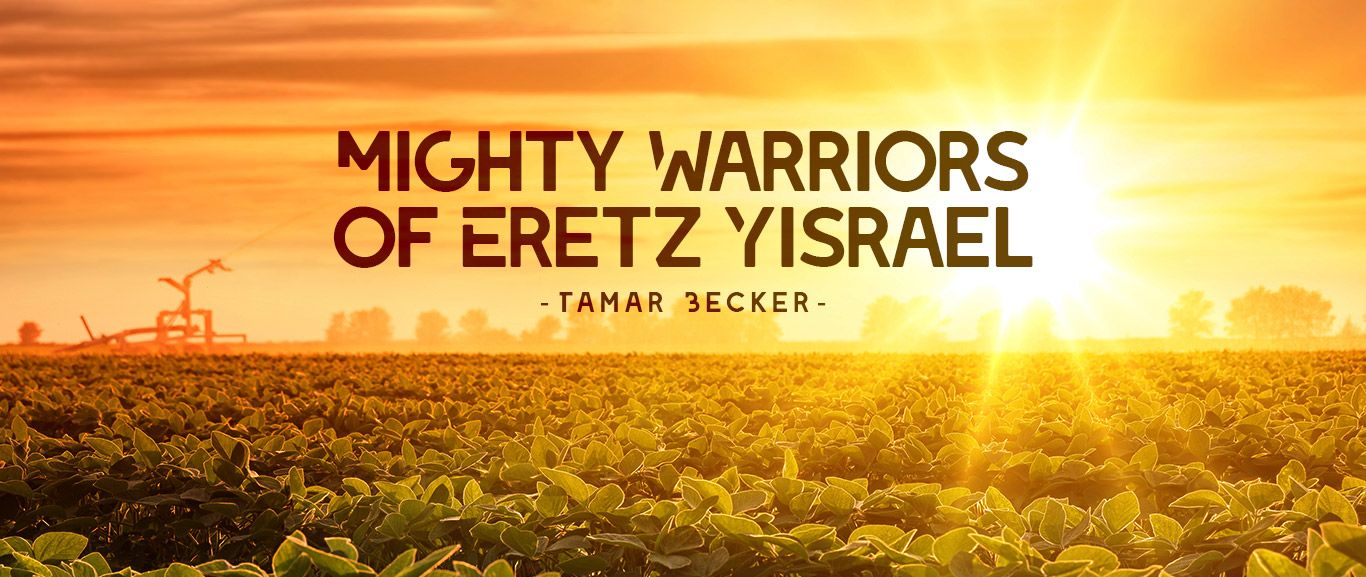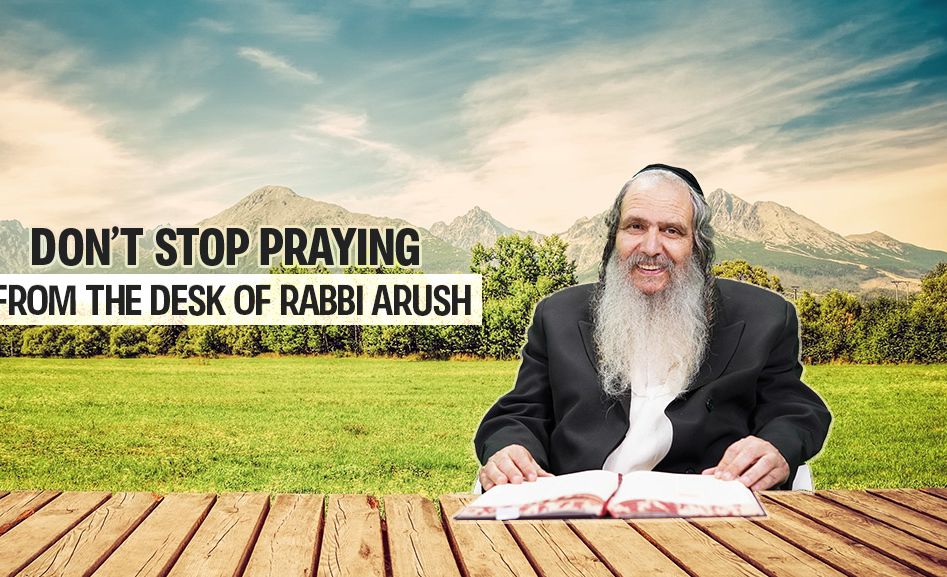
Mighty Warriors of Eretz Yisrael
These warriors don’t wear combat gear, fly F-35s, or serve in elite military units. They work the land of Eretz Yisrael under back-breaking conditions. Read of their simple, rock-solid emuna in Hashem’s direct Providence during the Shmita year that just finished.

They did it!
On Rosh Hashanah 5783, which began on sundown of September 25, 2022, Israeli farmers completed the year-long mitzvah of Shmita. For the first time in 2,000 years, over half of the farmers in Israel stopped farming for the entire Shmita year. And it was not an “ordinary” Shmita year (is there such a thing??) because this year had an extra month, Adar Beit.
Shmita Basics
The Jews settled in the Holy Land and divided it according to tribes (the fifteenth year after they crossed the Jordan River- in 1258 BCE). In 1258 BCE, they began to count seven-year cycles. Every cycle would culminate in a sabbatical year called “Shmita”, which means “to release.”
The year following the destruction of the second Holy Temple was the first year of a seven-year Sabbatical cycle. This was the Hebrew year 3829 (68–69 CE on the Gregorian calendar). Therefore, the Hebrew year 5782 (September 7, 2021 – September 25, 2022) that we just completed was a Shmita year.
Shmita involves releasing the land and any loans:
- Releasing land in Eretz Yisrael (Shmitat Karka) – Residents of the Land of Israel must completely desist from cultivating their land. They also relinquish personal ownership of their land – whatever produce grows on its own is considered communal property that is free for anyone to take.1
- Releasing private debts (Shmitat Kesafim) – Shmita waives all outstanding private debts between Jewish debtors and creditors, unless a prozbul2 was written.
Where the Farmers Stood
Some farmers did not observe Shmita at all, while others kept Shmita with a Heter mechirah (“sale dispensation”)3. A third group kept Shmita stringently, without using a Heter mechirah.
Farmers who either did not keep Shmita, or kept it with a Heter mechirah labeled the stringency “suicide”.
Conversely, the farmers that kept Shmita stringently all said that it was the best thing that they ever did! They faced stiff resistance, but they saw blessings in their fields, their families, their health, and their lives in general.
The Financial Side of Shmita
Farmers must let anyone onto their land to pick whatever was growing. The farmer could not charge for this produce. Since it is inconvenient for most people to go out to the fields themselves, an organization called Otzar Beit Din managed the picking, packaging, and transportation of produce to consumer distribution centers. The consumer pays for the cost of the handling so that those doing the work get paid, but the consumer does not pay for the produce itself.
To give you an idea of the financial stress that faced farmers who kept Shmita stringently, here are the expenses of an average Israeli farmer in the Sharon region4:
- Size of farm: 200 acres
- Cost of annual lease: $133,500
- Wife + children to support: 6
If the farmer does not pay the lease on his fallow land, the lease will be given to another farmer.
The Personal Side of Shmita
During the Shmita year, farmers do not work their land, vineyards, and orchards. Imagine that you’ve invested your life in your farm to the point that it is like a child to you – a child that you love and nurture. During the Shmita year, there is no plowing, no planting, no irrigating, no spraying, no pruning. Nothing! You gaze out onto your fields, vineyards, and orchards. What do you see? Weeds, wild shoots, and sparse blooms. Dry. Barren. As if the Jews have been driven once again from their land…
How did these farmers overcome their natural heart strings to go out to work on their beloved land?
Let’s listen in on some interviews by Jamie Geller with these heroic farmers…
Farming Family #1
[Husband speaking] “It started with our oldest son, Erez. One Shabbat he came home from the Beit Knesset (synagogue) with papers that told a story of a farmer. The farmer said that he had a big blessing on his 6th year crop (the year before the previous Shmita) and on his 8th year crop (the year after Shmita). Erez asked me, ‘Why don’t we keep Shmita? It’s a very special mitzvah!’”
“For me it’s very hard to see my fields, something that I build with, of course, with Hashem but also with my own hands – that it’s just left standing!”
[Wife speaking] “It’s hard. You don’t know what you’re going to do, but this time, I’m doing it from emunah, because I remember all our miracles that we had last Shmita!”
Farming Family #2
[Wife speaking] “I said to him [her husband], ‘Wow, how will we manage to go an entire year without working? Who will support us? How will we manage?’ He told me about Keren Hashvi’it. They help the farmers keep Shmita. It was hard to go an entire year without working – very hard. But he [her husband] says, ‘Don’t worry. Hashem will help.’ And I’m with him – together, we’re going to do this with all of our strength.”
[Husband speaking] “Everything that happens, we believe that it’s from Hashem. I believe in Hashem. True, I don’t wear a kippah, but I am someone who very much believes, I trust in Hashem. And this is a big opportunity for me to truly keep Shmita. All the companies that I had worked with until now were asking me to double or even triple the amount of produce that I was giving them! But this is the sacrifice! It took me only five minutes to decide that I am keeping Shmita and I withdrew from all of these offers.”
Women Farmers
One woman farmer related, “Farming is very much about having a direct relationship with Hashem on a daily basis. There’s a hot day, a cold day, sudden rains. One stormy day can ruin all your fields in minutes. ‘Hashem, we’ve done everything; we truly have complete faith that now it’s in Your hands to help us.”
Another woman farmer added, “You feel, you live Hashem and this [the land of Eretz Yisrael] is the best present, for me at least. I feel so small, and Eretz Yisrael is so small. I just want to say to them [those who support Shmita farmers] that they should feel closeness to Hashem.”
A third woman farmer said, “Do we have fears? Sure, just like we have fears being in this world. It’s a scary place. But it’s teaching us to have more emuna, and the more emuna you have in your life, the more you learn to surrender.”
A fourth woman farmer related [she was interviewed before the Shmita year began], “It’s said that Hashem increases the produce in the sixth year (up to Rosh Hashanah, 5762 – 2021). We will be harvesting in another month and a half. So far, it seems that our produce in this sixth year really is better than last year’s. We are one of the farmers that can say they are fulfilling this mitzvah – and it’s exciting! It strengths us. And we believe in Hashem, so it will be OK.” When asked why Shmita is so important to her, she replied, “Because we aren’t only farmers to make money. We believe in the connection between man and the earth. And this connection is something that comes from Above. It shouldn’t be taken for granted that the nation of Israel in the Land of Israel can keep this mitzvah. We believe that the land has to rest, just like we need to rest on the seventh day, so that it can work with us.”
Lessons Learned
- On Yom Kippur, we read from the Book of Yonah. Yonah loved the vine that he planted to shade him from the intense sun. When the vine died, Yonah was heart-broken. Hashem responded that that is the same feeling He has for His children who are “gone”. There is a connection between loving Eretz Yisrael and its produce to loving other Jews. No wonder we do not have full ownership of Eretz Yisrael!
- The farmers who participated in Shmita experienced a sense of loss and mourning when they could not work the land. Several farmers had tears in their eyes as they described their barren fields. As for us non-farmers… we have a plethora of apps, mobile devices, and video conferences to occupy us, as well as more and more “convenient” and “fast” food in our lives. Instead of being so connected to our devices and conveniences, we need to be deeply connected to Eretz Yisrael.
We have a lot to learn from these farmers – their love Eretz Yisrael, their simple yet solid emuna in Hashem’s providence, and their heroic personal sacrifice for mitzvot. Let us take this strength and continue it for the next six years.
Related articles and video
Behar: Shmita , Yovel, and Shabbat (video)
Footnotes
1 Source: Vayikra 25: 3-6
2 A document that makes a private debt into a public debt that can be redeemed after the Shmita year ends. The Torah states that while all private debts are forgiven by Shmita, public debts are exempt. Source: Devarim 15:1-2.
3 Heter mechirah is a method devised by three prominent rabbis in response to the life-threatening situation in Israel in the late 1800s. The land is sold to non-Jews (similar to the sale of chametz before Passover) for the duration of Shmita. This “non-Jewish” land is then permitted to be worked, and its produce sold. From its inception, the Heter mechirah has been controversial, with halachic authorities on both sides of the debate.
4 Source: Keren Hashviit website








Tell us what you think!
Thank you for your comment!
It will be published after approval by the Editor.